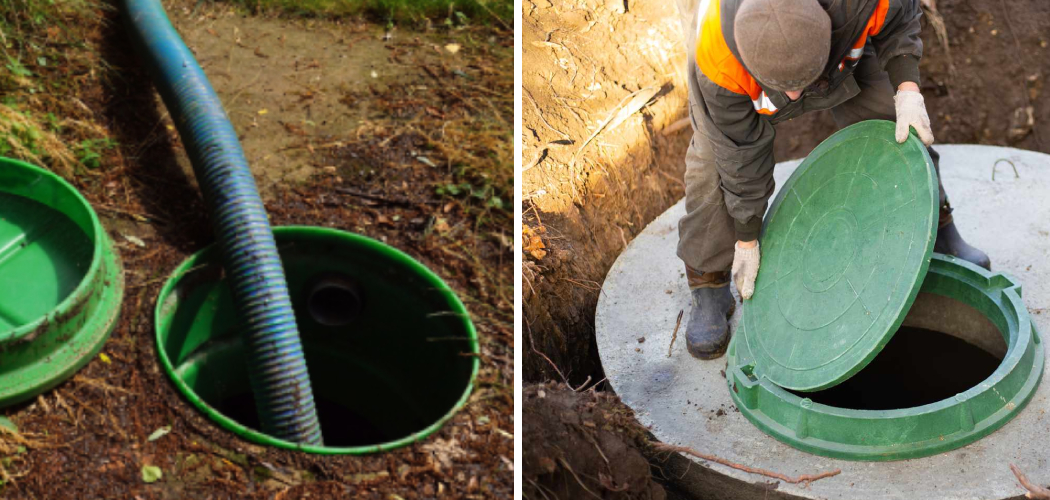If you’ve noticed an increase in scum and buildup from your septic tank, don’t worry – the good news is that there are steps you can take to reduce and resolve it. Your septic tank plays a critical role in collecting wastewater for treatment before disposing of it safely into the environment.
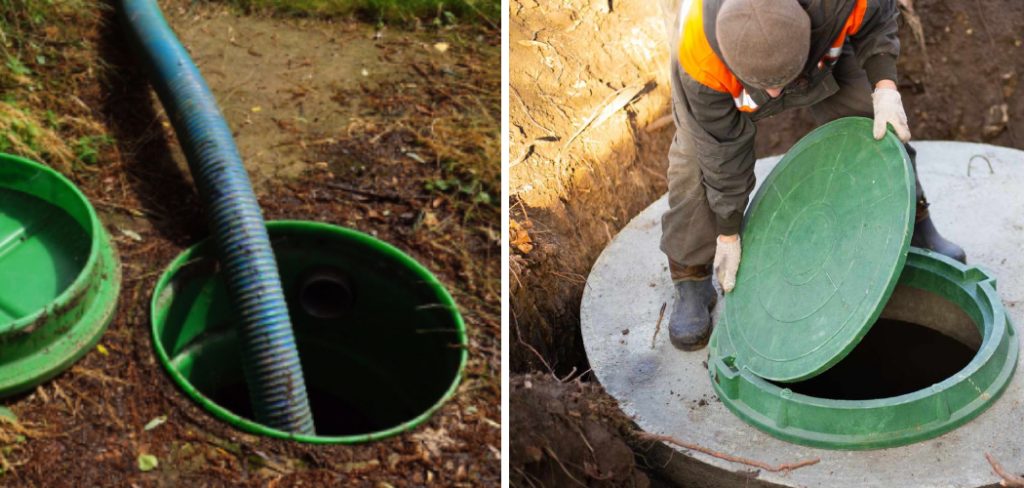
It’s important to keep your septic tank maintained so that you can avoid any complications, such as unpleasant odors or even damaged pipes from toxic buildups. Here we’ll explain why scum accumulates in septic tanks, how to reduce scum in septic tank, and the key benefits of doing this so you have peace of mind for years to come!
What Causes Scum Layer in Septic Tank?
The scum layer in a septic tank is caused by sewage that contains high levels of fats, oils, and greases (FOG). These substances float to the top of the tank and create a floating layer of scum. In addition, paper products, sanitary wipes, and other materials can clog up the system as well. When this happens, it’s important to take steps to reduce or remove the scum layer from your septic tank in order to keep it functioning properly.
One way to reduce the amount of FOG entering your septic system is by installing grease traps at all sinks where cooking grease is washed down the drain. This will catch much of the oil and fat before it enters into the septic system. Additionally, it’s important to dispose of all paper products and sanitary wipes in the garbage can instead of flushing them down the toilet.
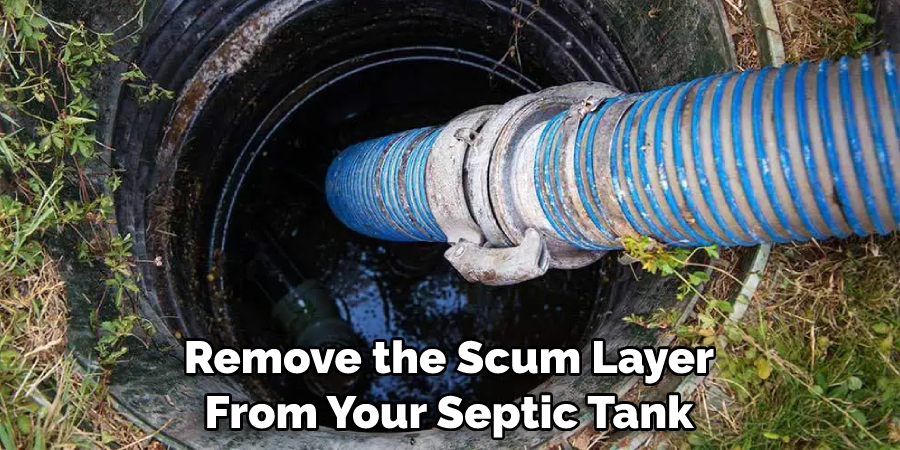
In addition to preventing scum from entering the septic tank, it is also important to maintain a healthy bacterial population in the tank. This can be accomplished by adding bacteria additives or organic matter such as food scraps, coffee grounds or other biodegradable materials into the septic tank regularly. Doing this will help break down any existing FOG that may be present in your septic system and prevent additional layers from forming.
What Is Normal Scum Layer in Septic Tank?
A normal scum layer in a septic tank is one that contains organic matter such as grease, oils, and other debris. This material should not exceed 25 percent of the total liquid volume in the tank. If it does, then it will need to be addressed before attempting to reduce the scum level through other means.
The ideal situation would involve no more than 6 inches of solids on top of the water line within the tank. Anything above this depth should be considered excessive buildup, and steps should be taken towards reducing these levels. A professional inspection may be necessary to determine if your septic system needs maintenance or repairs.
10 Methods How to Reduce Scum in Septic Tank
1. Maintain a Regular Pumping Schedule
One of the best ways to reduce scum in your septic tank is to maintain a regular pumping schedule. Depending on the size of your tank and the number of people in your household, you should have your tank pumped every three to five years.

Having your tank pumped on a regular basis will help to remove the build-up of scum and sludge that can lead to problems. Though pumping is an important part of septic tank maintenance, it should not be done too often, as this can disrupt the balance in the system.
2. Use Septic-Safe Products
Another way to reduce scum in your septic tank is to use septic-safe products. This includes avoiding products that contain bleach, ammonia, or other harsh chemicals. These chemicals can kill the beneficial bacteria in your septic tank that help to break down waste.
Instead, use environmentally friendly cleaning products and avoid pouring grease or oil down the drain. You should also avoid flushing items like paper towels, cat litter, or personal hygiene products as these can clog the tank.

3. Reduce Water Usage
You can also reduce scum in your septic tank by reducing your water usage. This means avoiding activities that use a lot of water, such as laundry and dishes. You can also install low-flow fixtures in your home, such as low-flow toilets and showerheads.
Reducing your water usage will help to reduce the amount of wastewater that enters your septic tank, which will help to reduce scum levels. Although reducing water usage is a great way to help reduce scum in your septic tank, it is not always the most effective solution.
4. Direct Downspouts Away from Your Tank
Another way to reduce scum in your septic tank is to direct downspouts away from the tank. This will help to prevent stormwater from entering the tank and causing an increase in scum levels. You can do this by installing a French drain or another type of drainage system around your home.
This can help to redirect the water away from your septic tank and prevent it from entering the system. Additionally, if you have a sump pump, make sure it is properly connected to the city’s sewer system so that any water it pumps out of your home does not enter your septic tank.
5. Inspect Your Tank Regularly
Inspecting your septic tank on a regular basis is another good way to reduce scum levels. This will allow you to identify any problems with your system and make necessary repairs before they cause serious damage.
You should have your septic tank inspected at least once every three years by a professional. During the inspection, they can look for signs of excessive scum levels and take steps to reduce them.
6. Fix Leaks Promptly
If you have any leaks in your plumbing, it’s important to fix them promptly. Leaks can allow water to enter your septic tank, which can lead to an increase in scum levels. To prevent leaks, regularly check pipes and fixtures for signs of wear and tear and make repairs as needed. If you have older pipes, consider replacing them with newer ones that are less prone to leakage.
Additionally, make sure your toilets are properly sealed and check for any cracks or damage in the porcelain. If you choose to use chemical drain cleaners, be sure to use ones that are specifically designed for septic systems.
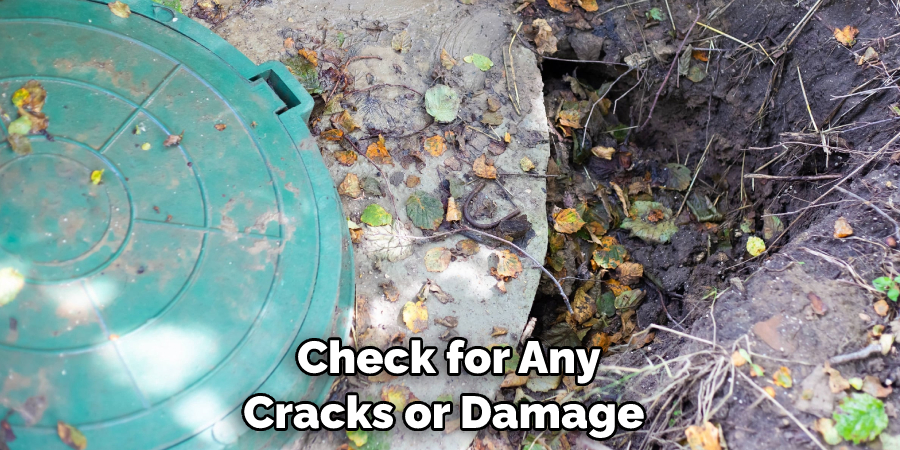
7. Don’t Flush Non-Biodegradable Waste
You should also avoid flushing non-biodegradable waste down the toilet, as this can clog up your septic system and lead to an increase in scum levels. Non-biodegradable waste includes items such as cigarette butts, paper towels, sanitary pads, and condoms.
If you must dispose of these items, put them in the trash instead of flushing them down the toilet. However, some states have laws prohibiting the disposal of condoms and other hygiene products in the trash, so you should check your local regulations before disposing of them.
8. Install a Septic Tank Riser
Installing a septic tank riser is another good way to reduce scum levels in your septic tank. The riser is a structure that attaches to the lid of your septic tank, allowing easy access for maintenance and cleaning.
It also keeps the tank’s contents higher up in the tank, which can help reduce scum levels. When you have a riser installed, it is important to check the tank regularly and clean out any scum that has built up.
9. Install a Septic Tank Aerator
Another way to reduce scum levels in your septic tank is to install a septic tank aerator. This device uses a blower motor to inject air into the tank, which causes the sludge and scum to be suspended in the water, making it easier for the bacteria to break down.
This prevents buildup and can help reduce scum levels in your tank. In addition, the aerator can help reduce odors from your tank, making it a great way to keep your septic system running smoothly.
10. Install a Septic Tank Filter
The final way to reduce scum levels in your septic tank is to install a septic tank filter. A septic tank filter is a device that is placed in the outlet of the septic tank and prevents debris from entering the drain field.
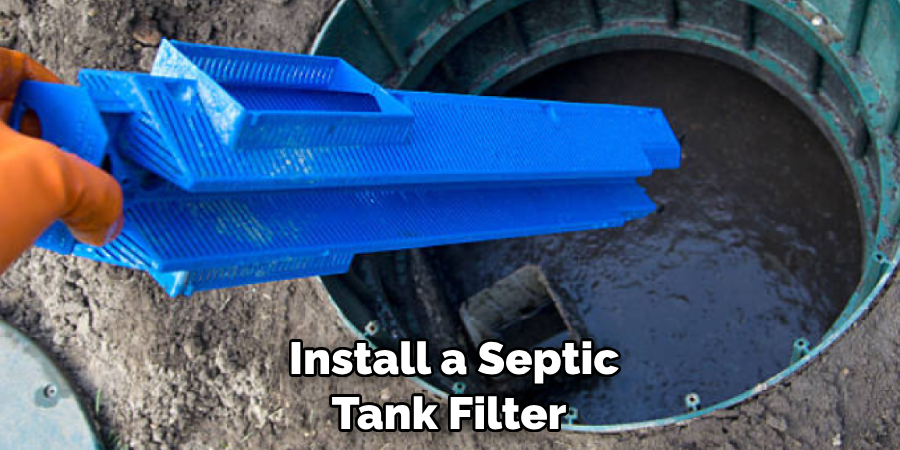
The filter is designed to remove particles and scum that can clog the drain field, making it less efficient. Installing a septic tank filter is an easy and cost-effective way to reduce the amount of scum in your septic tank.
Some Common Mistakes When Reducing Scum in Septic Tank
1. Using Too Much Cleaner:
It’s important to use a septic-safe cleaner and follow the instructions carefully when cleaning out your septic tank, but using too much could be harmful. Too many chemicals can disrupt the natural bacteria in the tank and cause it to become unbalanced, leading to more problems down the road.
2. Waiting Too Long Between Cleanings:
Regularly cleaning out your septic tank is essential, as sludge and scum can quickly accumulate and clog the system. Some experts recommend having it cleaned out every two to three years, depending on the size of your tank and how much wastewater it holds.
3. Not Pumping It Out Properly:
When you do pump out your septic tank, make sure that all of the sludge and scum is removed. Otherwise, it can remain in the tank and cause clogs over time. It’s also important to make sure that the tank is pumped out completely so that all of the solids are removed.
4. Not Maintaining Your Septic Tank:
It’s important to have your septic tank inspected regularly to ensure that it is functioning properly. This includes checking the inlet and outlet pipes for any clogs or buildup, as well as inspecting the baffles inside the tank. If you notice any problems, they should be addressed quickly to prevent further damage.
Conclusion
In conclusion, reducing scum in a septic tank is easier said than done. The process takes time and planning. Make sure to use starters such as enzyme or bacteria treatments to help reduce the amount of scum in your septic tank. Dive into some research about what methods and products are available for use on a home septic system.
As a homeowner, it is important to invest in regular maintenance and repairs to keep your home septic system running smoothly. Once you’ve begun clearing the scum from the tank, practice regular preventative maintenance to continue preventing buildup from occurring again. So, there you have it – a quick and easy guide on how to reduce scum in septic tank.

